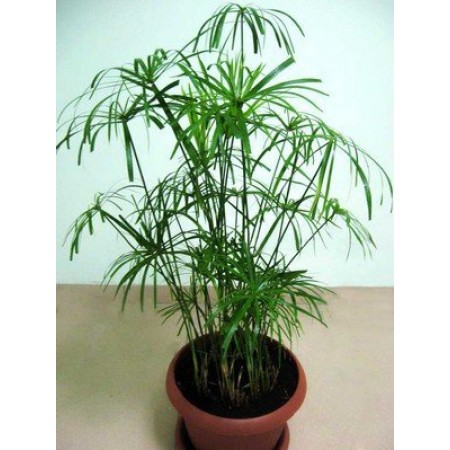Growing Cyperus at Home

Tsiperus can be safely attributed to plants with an exotic appearance - this flower will decorate your home, adding a touch of uniqueness and sophistication to the interior. True, there are certain rules in the care of this representative of the flora. And in this material we will figure out how to create the most comfortable conditions for cyperus so that this flower will please us with flowering for several seasons.
Choosing a place for a pot
In order for cyperus to have a constant saturated color of the leaves, it is necessary to take care of the safety and protection of the plant from direct sunlight. The ultraviolet incident on it is able to quickly leave burns on the leaves, which will be very problematic to get rid of. However, the abundance of scattered light will favorably affect cyperus - so the plant can be saturated with useful substances that support its growth.
Typically, a flowerpot with cyperus is placed near the windows of the western and eastern sides of the house. It is ideal if a curtain hangs between it and the window. Do not worry about the extra shadow - cyperus will not die if you, for some reason, cannot provide it with constant access to the sun.
There is another rule when choosing the best place - you will need to either stably ventilate the room, or take out a pot of cyperus in the summer on a non-glazed balcony. The abundance of fresh air will affect the flower in a positive way, but in winter it is best to protect the plant from sudden temperature changes and falling into the gusts of cold winter air.
Watering, humidity and air temperature
Tsiperus belongs to the most, so to speak, gluttonous plants, consuming just a huge amount of fluid. It is necessary to ensure that the soil in the flower pot is constantly moist. If you can’t moisten the soil several times a day, then you can install a special tray with water - so the root system of the plant will have constant access to the necessary moisture.
The optimal value of the air temperature in the room with the plant will be an indicator within 20-24 degrees of heat. In the summer, if the temperature rises to 27-30 degrees, it is recommended to increase the number of irrigations and install water containers near the cyperus. In winter, the temperature must be maintained in the region of 16 degrees of heat, reducing the amount of watering to once a day.
If the plants began to dry the leaves, then you should immediately reconsider the air humidity level set in the room. Tsiperus needs a huge amount of liquid, and maintaining air saturation with moisture will contribute to the unhindered growth and favorable wintering of this whimsical representative of the flora.